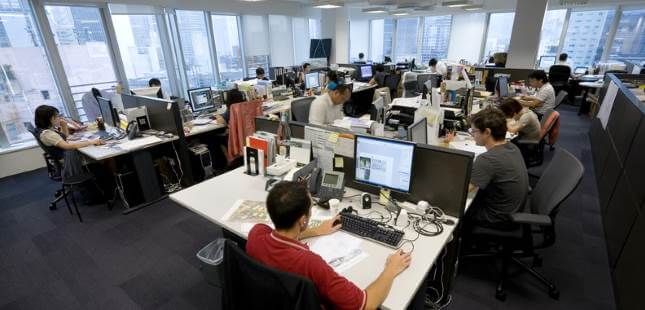Office Work vs. Telecommuting – Why the Former Could Beat the Latter
In the sci-fi era, video communication was a distant feature. Today, the so-called virtual teams, which are geographically dispersed employees communicating with each other using hi-tech equipment, have become common in many organizations. The team members could be in the nearby city or in another continent.
This hi-tech communication made many people think that we no longer need offices. Eh, who would want to get up early in the morning, get dressed, take the way to work and go through office issues where the alternative is working in the comfort of your home? Many people. Including the bosses and the employees. Even if working remotely looks like a dream job, there are many downsides to it, both personally and organizationally. Here is why.
I was one of the people who thought office work is a boring thing compared to telecommuting. When I was discussing with one of my colleagues about why our department does not need to be present at the office, he said “even if we are allowed to telecommute, I would want to come to work everyday, because that is a way of socializing.” I wasn’t expecting such a response. Then, years later, Marissa Mayer became the CEO of Yahoo and one of the first things she did was to require all employees to work in the office.At that year, I have switched from IT infrastrcuture support to corporate academy because of a small cafeteria discussion! There is no hallway discussion, cafeteria talk or unplanned meeting when you are working from home. That means, there are no sparks coming from the human interactions. This is a very big loss for a company.
RELATED: What Can Every Web Hosting Company Learn from Google Mesa?
In addition it is harder to manage the off-site workers compared to the on-site ones. There are plenty of things going on without any of us noticing in the office: our manager can come and say “hey, let’s come to my room, there is something I need to share”, we can pick up our colleague’s phone and talk about an issue she is working on but we do not know (maybe contribute), the small favors we do each other to make our days more enjoyable. From a management perspective, this means being a team, motivation and collaboration. Managers lose a big part of this for off-site workers.
From an employee perspective, some employees do not want to communicate, such as my colleague I have just talked about. People simply like to be in a social environment.
RELATED: Who Is the Next Tech Giant?
There are also people who cannot telecommute. Telecommuting requires many skills to be a successful at-home worker: you have to be better disciplined, have better communication skills, more punctual. In the office, these skills are not obvious: coming to work on time is not discussed and is considered one of the visible elements of discipline. At home, you need to be connected to the office at the same/determined time and be at the same alertness level.
In addition, being social has many sides. One is the communication I have just talked – you cannot bring coffee to your colleague in a Skype meeting. The other one is the guidance to the younger or new staff. You cannot take a new colleague to lunch or nearby cafe over Skype. You cannot develop a sense of belonging in a new employee without interacting in person.
Without communication, socializing and loyalty, you cannot build trust. Out of sight, out of mind begins to shake trust over time. We people tend to be more nervous over things we do not feel. Freelance professionals know this very well: when employers do not see what you are doing, they most likely grow a feeling of distrust. They begin to question if it really takes that long to finish the issue. Similar questions begin to form about the telecommuting employee – is he watching TV right now, what if he is checking his emails but browsing the job vacancies at the same time?
RELATED: IT Staff’s Major Headaches
For now, some companies found the best of two worlds: flexible hours. That is, the employees are required to be present at work during the peak period – when most of the work is done, e.g. from 1100 to 1500. For the rest of the day the employees choose when they work, subject to meeting daily/weekly/monthly hours that the employer requires. In this so-called flextime, employees are expected to maintain their current performance.
It is obvious that the office work is alive and strong but it is under pressure to transform. Flextime can be the transitioning solution for today, but it is still not clear if the benefits surpass the costs.
What does your company do? Office only? Flextime? Considering options? Tell us below in the comments!
References
- Featured image: https://storify.com/




